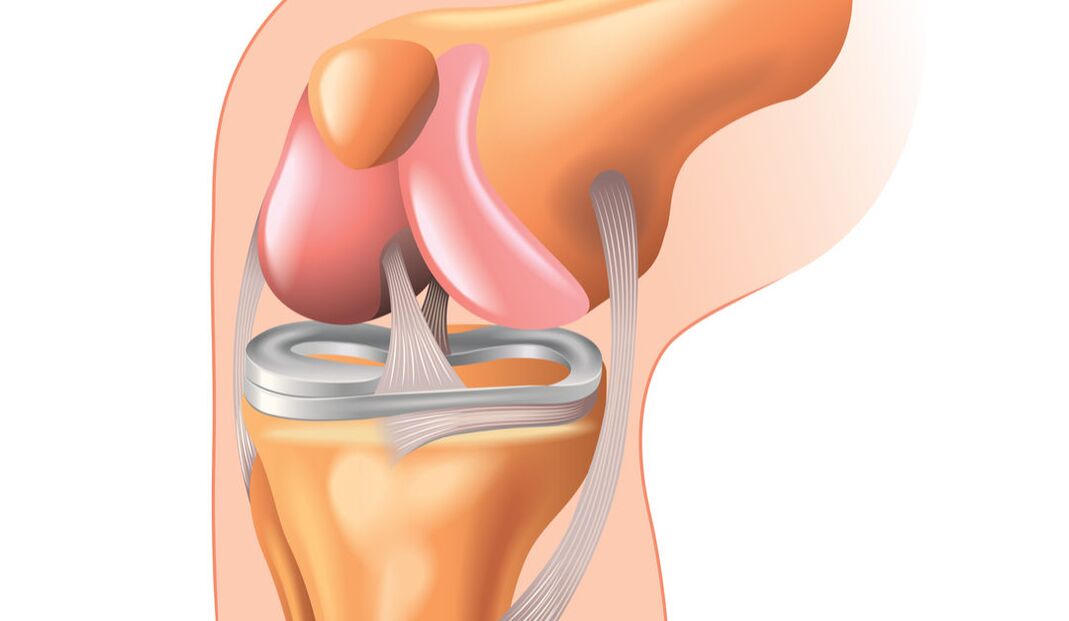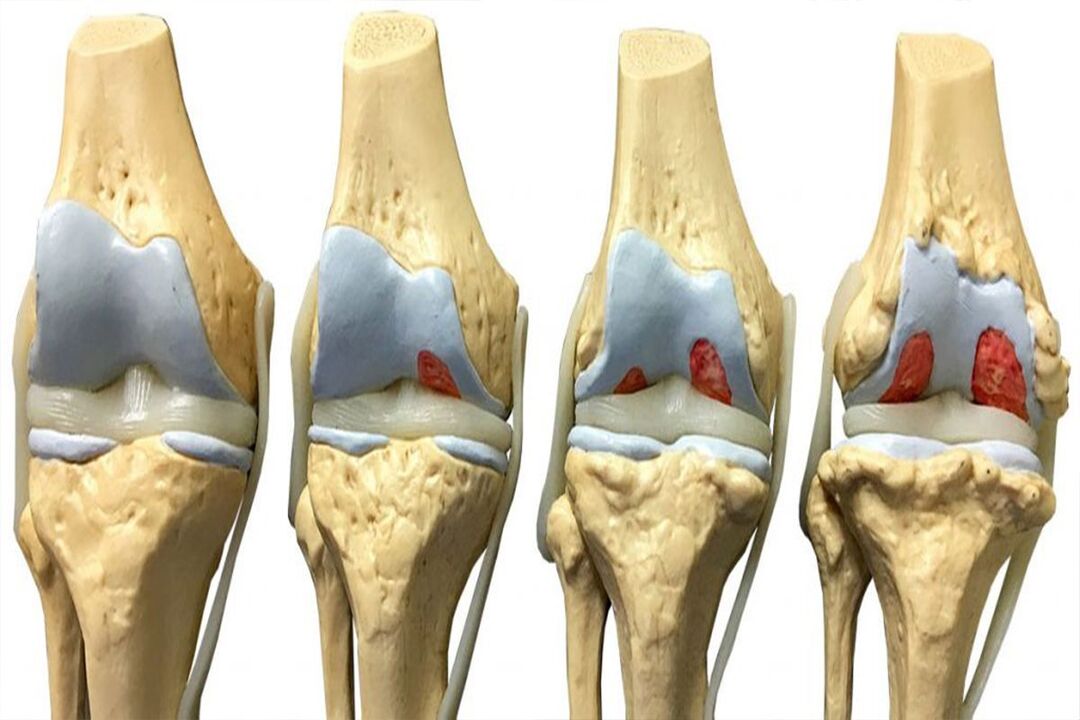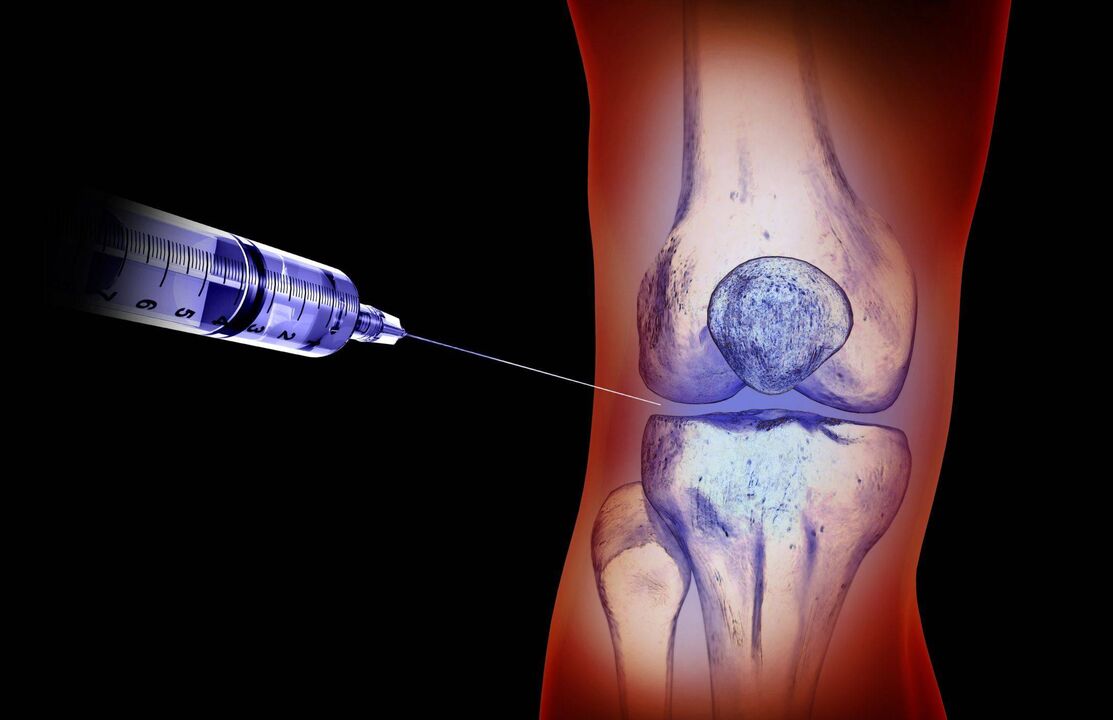The inflammatory-degenerative process in the knee joint, or gonarthrosis, occurs for various reasons. It has an extremely negative impact on a person's quality of life, sometimes leading to disability. How to treat arthrosis of the knee jointAnd how to prevent complications?
what is arthrosis
About 22% of the world's population suffers from gonarthrosis, and women are more affected by it. This fatal disease is characterized by rapid progression.

If treatment is not started on time, the knee joint can be completely destroyed. This impairs musculoskeletal function. Walking is possible only with the help of crutches, otherwise the person becomes hostage to a wheelchair.
The knee joint is the second largest after the hip and the most complex in structure. It allows you to bend and straighten your leg in different directions, promoting the correct position of the body and coordination in space. It is aIs a strong and stable joint that can bear a person's weight. It consists of 3 bones: the femur, tibia and fibula, as well as the patella or kneecap. It includes osteochondral structures, muscles, ligaments and nerve fibers.
The disease begins with a violation of blood circulation and nutrition of the joint tissues. First of all, the cartilage suffers. The quality and quantity of the synovial fluid, which is located in the joint capsule and contributes to the smooth functioning of the knee, is reduced. Friction occurs between the joint parts. Gradually, the cartilage breaks down and collapses. The unprotected bones begin to rub against each other. Pain occurs and a creaking sound is heard.
due to disease
It mainly affects older people, especially overweight women. As a result of hormonal changes, the cartilage in the knee wears out greatly. Gonarthrosis to varying degrees occurs in more than 80% of people after 60 years.
There are other reasons for the appearance of knee arthrosis:
- Congenital joint pathology;
- dysplasia;
- Injuries, operations;
- Removal of the meniscus or part of it;
- Arthritis;
- diseases of the lumbar spine;
- hormonal disorders;
- Low metabolism.
People who perform frequent physical exertion are at increased risk of developing this disease. This group also includes athletes, people leading a sedentary lifestyle, and people with adverse environmental conditions. Often patients are exposed to toxic substances (drugs, alcohol, There are people dependent on smoking).
The cause of joint pathology can be work associated with frequent hypothermia. The provoking factor is the period after menopause, when a woman develops gynecological disorders (fibroadenoma, endometriosis, uterine fibroids). Due to the lack of minerals and vitamins in the bodyDiet may be a trigger.
Stages and Symptoms
Gonarthrosis can be unilateral or bilateral. According to the nature of the manifestations, the disease is divided into degrees:
- At this stage, there are no obvious clinical signs. There may be mild discomfort and pain after prolonged exercise, which disappears after rest. The pain is felt in the morning, on movement, for some time. The latter goes away. The diagnosis of arthrosis of the first degree is rarely made, incidentally, during routine examination.
- Pain and stiffness in the knees increases. A person protects his leg and attempts to put less load on it. As a result, the muscles atrophy, the joint deforms, a formation can be felt, andThe leg is not fully extended at the knee.
- The pain remains constant. The leg does not straighten or bend and it becomes difficult for the person to walk. Partial or complete loss of mobility develops. The cartilage is completely destroyed, increasing friction between the bones of the joint with the formation of osteophytes.

In addition to pain in grades 2 and 3, crunching sounds are heard in the knee. Fluid and pieces of cartilage tissue can accumulate in the joint capsule, causing inflammation. In the late stage, the inflammatory process becomes evident. , the knee joint becomes deformed.
diagnosis
If you have knee pain, you can contact your local doctor, who, if necessary, will refer you to an orthopedist, traumatologist, rheumatologist or endocrinologist.
A comprehensive diagnosis is needed to find out the causes and treatment of gonarthrosis:
- General and biochemical blood test;
- rheumatic test;
- Radiography;
- Ultrasound and MRI can detect the disease at an early stage;
- arthroscopy
X-ray makes it possible to see the condition of the cartilage and changes in the bones in stages 2 and 3. This is a narrowing of the joint space, osteophytes along the edges of the patella, changes in the periosteum. Arthroscopy Meniscus, synovial membrane and presence of fluidThis method is also used in knee treatment, to remove pieces of cartilage or meniscus.
Treatment of knee arthrosis
Therapy is long and sometimes painful. Once manifested, the disease will remind you of it all your life. The main drugs used for treatment are non-steroidal anti-inflammatory drugs. Most often these are from the group of phenylacetic acid derivatives. There are drugs based on non-steroidal anti-inflammatory drugs (NSAIDs). These eliminate inflammation and pain. The drugs are relatively inexpensive, but cause ulcers and erosions of the stomach and duodenum. Modern drugs cause fewer side effects, But they are expensive.

Treatment measures of stage 1 include exercise-related preventive measures. Daily exercise, use of contrast showers, swimming pool 2 times a week and combating increased body weight are necessary.
Stage 2 requires fixation of the joint - the use of an elastic bandage, splint or orthosis. For pain relief NSAIDs are used in the form of creams and ointments. To reduce the degree of cartilage destruction, the patientTo are prescribed drugs from the group of chondroprotectors.
Severe severity requires oral administration of NSAIDs. Intra-articular injection of hormonal drugs is indicated - synthetic glucocorticosteroids (GCS), which have high glucocorticosteroid and low mineralocorticoid activity. Additionally, pain relievers are prescribed. Are going.
A solution of hyaluronic acid is injected into the joint. It substitutes for intra-articular fluid and nourishes the cartilage. When moving, it acts as a shock absorber for the joint. The manipulation is painful, the acute periodThis is done by the doctor after reduction. If conservative treatment is unsuccessful, endoprosthetics is done.
Along with drug therapy, exercises using special simulators and devices (kinesitherapy) are prescribed. Ozone therapy has a positive effect on the condition of the knee. The substance is used externally, by subcutaneous or intramuscular injection. , administered through ozone-based ointments, creams. Manipulation stimulates blood circulation, enhances the effect of chondroprotectors and glucocorticosteroids.
Modern dietary supplements are in demand as an alternative to drugs for the restoration of joints. Exercise therapy and massage are indicated. A set of special exercises improves blood circulation and nutrition of cartilage cells, increases the elasticity of ligaments. .
Complications and prevention
Destroyed cartilage tissue and deformed bones cannot be treated. Only surgery will help in this situation. No ointment or medicine can restore cartilage. Medicines can only stop the process of destruction of cartilage tissue.
Gonarthrosis progresses slowly, sometimes the disease persists for years. Without proper treatment, the patient's condition quickly worsens. The knee cannot function, serious complications appear:
- joint deformity;
- Cosmetic defect – curvature of a limb;
- Infection with blood or lymph flow from another source in the body;
- Due to the weakness of the ligaments, dislocations and fractures are observed even during normal walking;
- Bone fusion (ankylosis) occurs in the joint area, making movement impossible.
Complications develop if the patient does not see a doctor in time and the disease progresses. Regular preventive examinations and timely treatment of common diseases of the body will help prevent worsening of the condition and maintain the motor function of the organ.


























































































